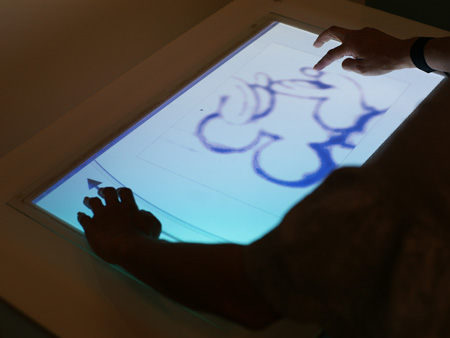
What is TeslaTouch?
TeslaTouch is a new tactile interface technology that infuses finger-driven touch interfaces with physical, tactile feedback. It is based on the electrovibration principle, which can programmatically vary the friction between sliding fingers and a touch panel. As the result, TeslaTouch technology requires no moving parts and therefore it is inexpensive, lightweight, requires little power and can provide tactile sensation on touch panels of any size and shape This is unlike most of the existing tactile feedback technologies, which use mechanical devices to provide tactile sensation, such as vibration motors.
When combined with an interactive graphical display, TeslaTouch enables the design of interfaces that allow the user to feel virtual elements and their properties on a touch screen. For example, when dragging a file, the level of friction could convey the file size; feeling textures and materials could be explored with fingers; objects could be felt “snapping” into place or perhaps with a quick “rub” of email application’s icon, you could sense how many emails are unread. These are just a few ideas where this technolgy can be effectively used.
TeslaTouch in Pictures
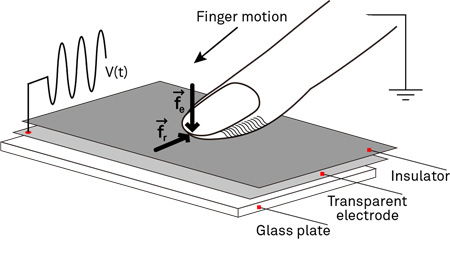
TeslaTouch is based on a principle of electrovibration, discovered in 50s. We excite the electrode with an electrical signal of sufficient amplitude generating a periodic attractive force between sliding finger and the panel. This creates the dynamic friction between the finger and the surface of the panel.
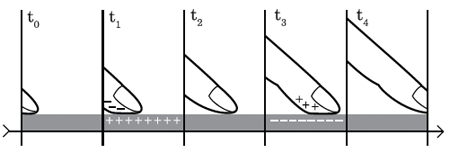
Changes in friction are periodic and generate the feeling of dynamic tactile textures on a static, unmovable glass surface. Depending on signal amplitude and frequency, these textures are percieved as either vibrations or friction.
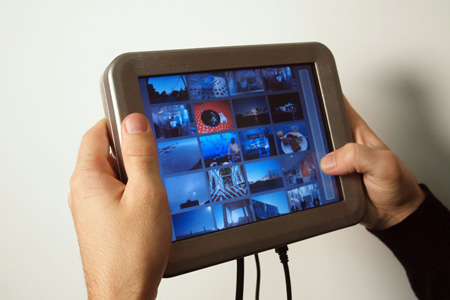
TeslaTouch can enhance touch screen interaction on handheld devices.
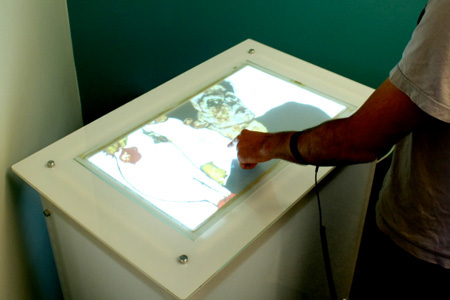
An important property of TeslaTouch is that it can be provide tactile feedback for very large touch screens, such as interactive tables and walls.
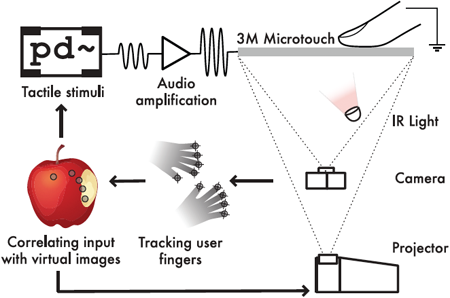
TeslaTouch can be combined with various input techniques, such as diffused IR illumination sensing approach that is often used for interactive tables.

Traditional icons such as files and folders can be enhanced with variable levels of tactile friction. That would allow to feel thier properties such as file size or interaction with other icons such as in drag-and-drop operations.
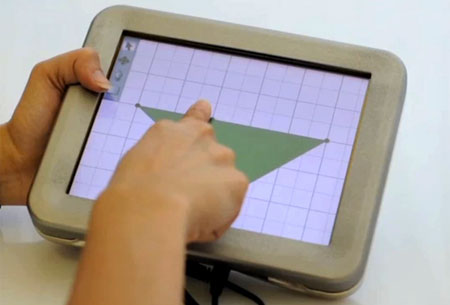
Drawing interactions, such as objects positioning can be enhanced with tactile feedback, e.g. users could feel underlying alignment grids with thier fingers.
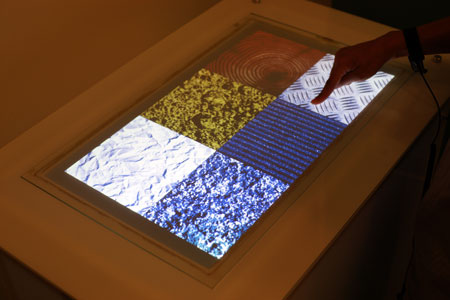
TeslaTouch can simulate a feeling of textures and materials, such as glass-smooth, or rough like corderoy or irregular like sand. The feeling of textures can be experienced implicetely by sliding fingers over thier images.
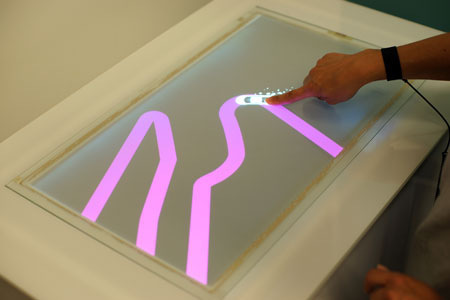
Textures can be experienced explicitely by simulating friction between objects, e.g. a user could feel a virtual pavement while dragging a car along it.
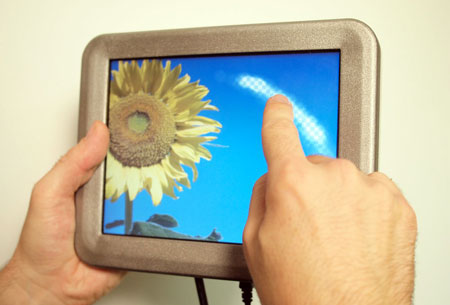
TeslaTouch can provide tactile feedback on the degree of image modifications in painting applications. For example, in erasing task the tactile sensation would decreases as pixels are being progressively removed from the image.
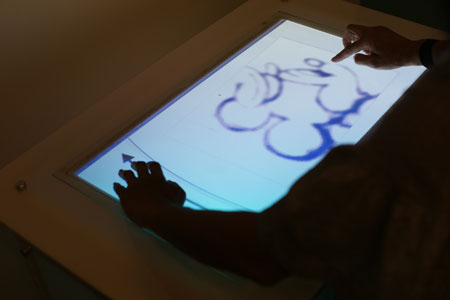
TeslaTouch can provide tactile feedback for multitouch gestures that do not require using multiple fingers/hands at the same time. In drawing, one hand orients canvas, while another hand performs writing or drawing. In this case, TeslaTouch can provide unique tactile feedback to both hands.
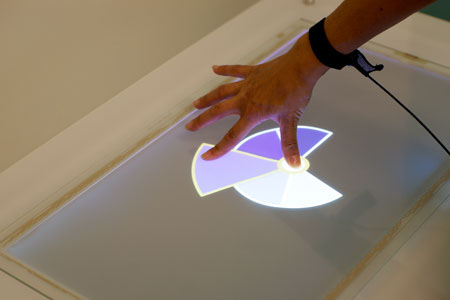
The user selects from the pie menue using an achoring gesture with the thumb remaining static and the pointing finger sliding on the surface of display and therefore percieving tactile feedback.

TeslaTouch allows to map outputs from a broad vareity of sensors, such as camera, to tactile feedback.
Publications, Awards
Bau, O., Poupyrev, I., Israr, A, Harrison, C. TeslaTouch: Electrovibration for Touch Surfaces. Proceedings of UIST 2010: ACM: pp. 283-292. [PDF]
Best Demo Award at World Haptics 2011 Conference. [PDF]
Media, Press
Team and Credits
TeslaTouch has been developed in 2010 at Disney Research Pittsburgh by me, Olivier Bau and Ali Israr in collaboration with Chris Harrison, HCII CMU.
Mark Baskinger and Jason May, CMU School of Design designed and produced TeslaTouch prototype enclosure.
Early exploration of TeslaTouch technology were conducted by me while at Sony Computer Science Laboratories in Tokyo.
